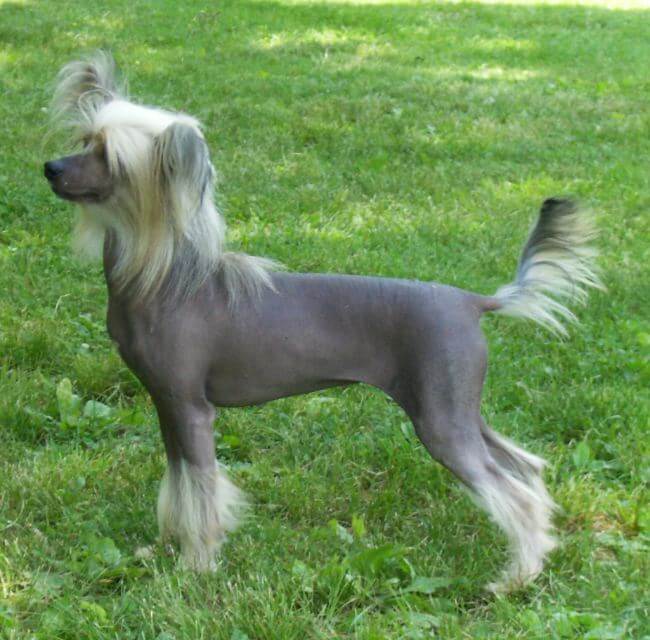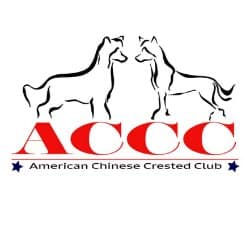


Home » Judging the Chinese Crested
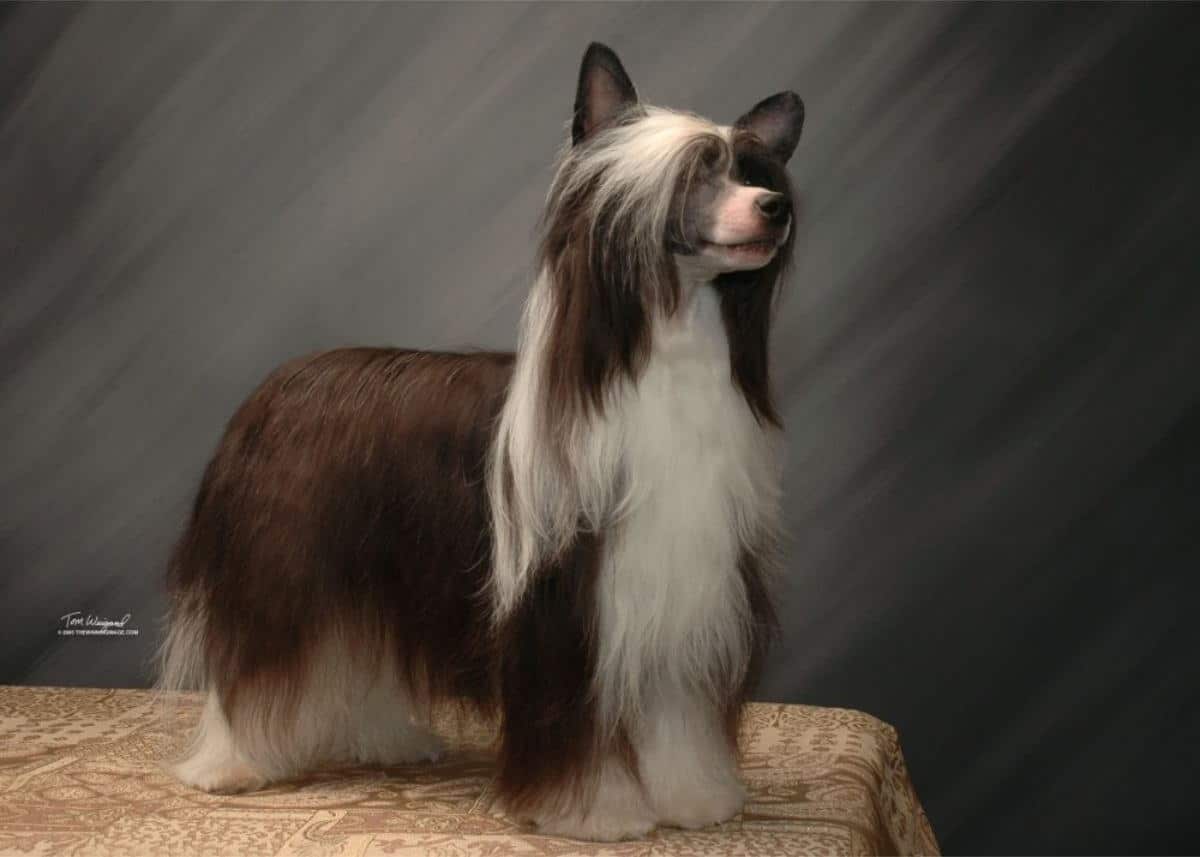
The Chinese Crested is a striking dog in both the Hairless and Powderpuff varieties. When they first enter the ring, you should be looking for: “A Toy dog, fine-boned, elegant and graceful. The distinct varieties are born in the same litter. The Hairless with hair only on the head, tail and feet and the Powderpuff, completely covered with hair. The breed serves as a loving companion, playful and entertaining.”
When you stand back to observe the dog on the table, keep in mind that they are rectangular rather than square. The Hairless variety can be sensitive to cold hands during the table exam and may tuck up. The topline should be assessed as the dog is moving around the ring.
Starting with the head, the Chinese Crested’s head is to be a wedge from the top and from the side. There is to be a slight but distinct stop. The eyes are almond-shaped and set wide apart, which enhances the alert and intense expression. Teeth are different in Hairless Chinese Cresteds. You can have everything from a full mouth correctly placed to a minimal number of teeth. The most important part is that the jaw is properly aligned. Both scissors and level bites are allowed in either variety. The Hairless Variety is not to be faulted for the absence of full dentition. Missing teeth in the Powderpuff are to be faulted; however, there are no DQ’s in the Breed Standard and missing teeth are not to be considered any more of a fault than any other deviation from the Standard.
In both varieties, the ears are large and erect, round or pointed; either is equally seen and acceptable. Grooming may include shaved ears, fully-coated ears, a shaved face, a fully coated face, and any combination of these—all are equally correct and acceptable.
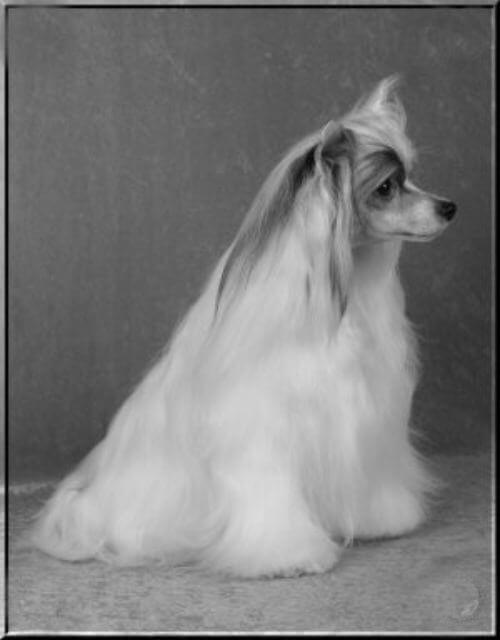
The topline is level, leading to a slightly sloping croup. Tail is slender and tapers to a curve. It is long enough to reach the hock. When the dog is in motion, the tail is carried gaily and may be carried slightly forward over the back. At rest, the tail is down with a slight curve upward at the end resembling a sickle. In the Hairless variety, two-thirds of the end of the tail is covered by long, flowing feathering, referred to as a plume. The Powderpuff variety’s tail is completely covered with hair.
In the Hairless, soft and smooth skin is a virtue. The most important part when evaluating hair on the Hairless Chinese Crested is that it is to be soft and silky, flowing to any length. Areas that have hair usually taper off slightly, with the placement of hair not as important as overall type. The Powderpuff variety is completely covered with a double, soft, and silky coat. Close examination reveals long, thin guard hairs over the short, silky undercoat. The coat is straight, of moderate density and length. Excessively heavy, kinky, or curly coat is to be penalized. Grooming is minimal, consisting of presenting a clean and neat appearance.
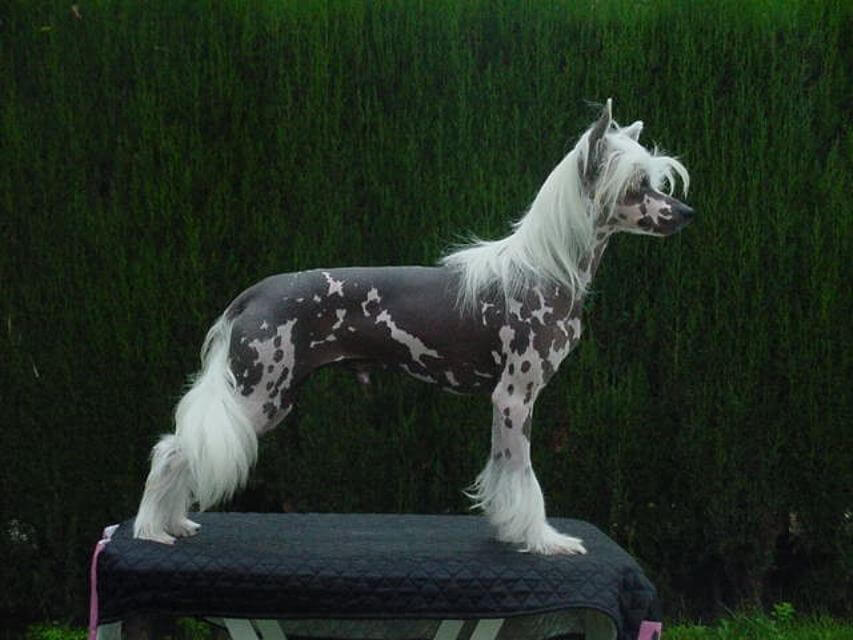
The angulation of stifle is moderate, shoulders clean and narrow with a 45-degree layback to allow for good reach and freedom in movement. The hare foot has elongated toes, and hair on the feet is from the toes to the front pasterns and on the hock joints. The gait of the Chinese Crested is lively, agile, and smooth, without being stilted or hackneyed. The dog comes and goes at a trot, moving in a straight line.
All in all, the Chinese Crested Standard’s first sentence explains the essence of the breed: “A Toy dog, fine-boned, elegant and graceful.” Our members and exhibitors continue to strive towards the written description of the breed’s virtues with each generation. In looking back to 1991, when we first were accepted into the Toy Group, it appears we have continued towards this goal.
